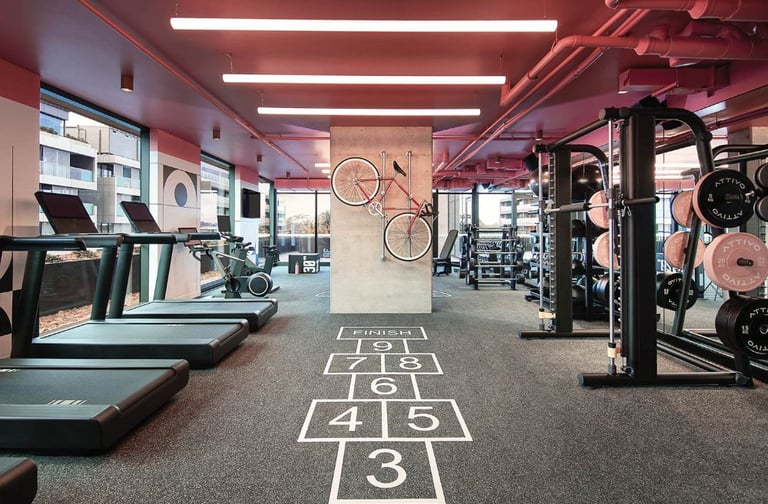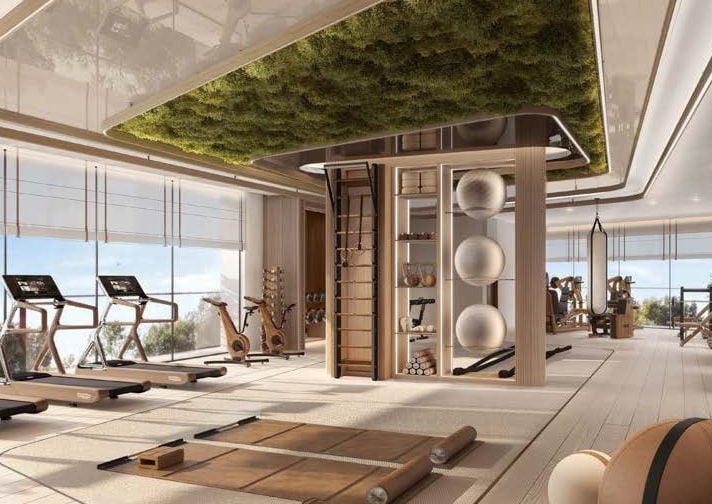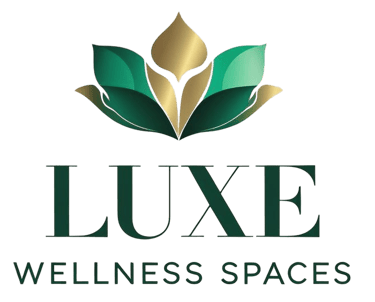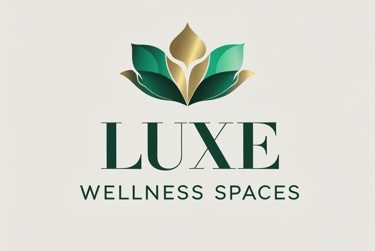Holistic Gym Design: Recovery Spaces That Drive Revenue
Discover how dedicated recovery zones, biophilic design, and mindfulness spaces transform fitness centers into premium wellness destinations.
Daryn Berriman
10/17/202511 min read


Modern fitness centers are evolving from equipment-only layouts into holistic wellness environments by incorporating dedicated recovery areas, quiet meditation rooms, and spa-like amenities alongside traditional workout zones. This shift addresses member demand for stress reduction and injury prevention while positioning facilities as premium wellness destinations. Research shows that gyms with integrated recovery spaces report higher retention rates and can command 15-30% premium membership pricing compared to conventional facilities.
Key Facts:
The global wellness real estate market reached $275 billion in 2023, with fitness facilities representing the fastest-growing segment (Global Wellness Institute, October 2023)
73% of gym members say they would use dedicated recovery and relaxation spaces if available, yet only 22% of facilities currently offer them (IHRSA Consumer Report, March 2024)
Facilities with biophilic design elements report 28% higher member satisfaction scores and 19% better retention (Journal of Environmental Psychology, January 2024)
Infrared saunas and cold therapy chambers have become the most requested recovery amenities, with installation costs recovering within 8-14 months through premium memberships (Club Industry Study, August 2024)
Acoustic treatment in fitness spaces can reduce perceived stress levels by up to 40%, directly impacting workout performance and recovery quality (International Journal of Wellness, December 2023)
Walk into most gyms and you'll see the same thing: rows of treadmills facing blank walls, weights crammed into corners, and zero space to actually recover from the workout you just finished. Now imagine a facility where members linger after their session, where the stretching area actually invites you to stay, and where the environment itself promotes healing. That's not a spa fantasy. It's the new standard for competitive fitness centers, and it's driving both member loyalty and premium pricing.
Holistic gym design means creating dedicated zones for every phase of wellness, not just the workout itself. Think beyond equipment and carve out intentional spaces for stretching, foam rolling, meditation, and active recovery. The design elements matter just as much as the square footage. Natural light through large windows or skylights, living plant walls that purify air and reduce stress, acoustic panels that absorb the clang of weights, comfortable seating that encourages social connection, and temperature-controlled recovery rooms all signal one thing: this gym cares about your complete wellbeing, not just your rep count. The financial logic is simple. Members stay longer when spaces serve multiple needs, retention improves when people actually want to be there, and premium pricing becomes justified when the environment delivers measurable wellness outcomes beyond calorie burn.
The Physical Breakdown: Zones That Matter
Start with dedicated stretching and mobility areas. This isn't a mat thrown in a corner. We're talking 300-500 square feet minimum, equipped with foam rollers, resistance bands, massage balls, and full-length mirrors. Rubberized flooring that's softer than the main gym floor. Adjustable lighting that dims for cooldown sessions. Some facilities are adding projection systems that guide stretching routines, removing the guesswork for members who skip recovery because they don't know what to do.
Quiet rooms for meditation, yoga, or breathwork need acoustic isolation. If members can hear weights dropping or trainers yelling, the space fails its purpose. Soundproofing pays for itself through usage rates. Install dimmable warm lighting, temperature controls independent from the main gym, and ventilation systems that don't create white noise. Natural materials like bamboo flooring, cork walls, and organic cotton bolsters communicate wellness before anyone says a word.
Recovery amenities are the revenue multiplier. Infrared saunas cost $8,000-$15,000 installed and create immediate differentiation. Cold plunge pools or cryotherapy chambers appeal to performance-focused members and recovery enthusiasts. Compression therapy systems, red light therapy panels, and float tanks might sound extreme, but facilities adding these amenities report them booked solid within weeks. The key is clustering them in a dedicated recovery suite rather than scattering them randomly.
Biophilic design isn't decoration. It's strategic. Living walls improve air quality while reducing cortisol levels in members. Large windows with views of nature or curated outdoor spaces lower perceived exertion during workouts. Even photos of natural landscapes have measurable calming effects. One gym in Portland added a 40-foot living wall in their main corridor and saw their member check-in duration increase by an average of 22 minutes per visit.
Social connection spaces often get overlooked, but they drive community. Comfortable lounge seating near smoothie bars or healthy cafes encourages members to stay and connect. This isn't wasted square footage. It's a retention strategy. Members with social ties at a gym cancel memberships 60% less often than solo exercisers.
Case Study: Equinox Hudson Yards
When Equinox opened their 60,000 square foot Hudson Yards location in New York, they dedicated nearly 30% of the space to non-workout zones. This included a cryotherapy chamber, infrared saunas, a dedicated cycling studio with mood lighting, a yoga/pilates studio with floor-to-ceiling windows overlooking the city, and a 25-meter outdoor pool. The stretching and recovery area spans 2,000 square feet with guided programming throughout the day. The facility commands memberships starting at $500 monthly, roughly triple the market average, with a waitlist that persisted for eight months after opening. Their retention rate sits at 94% annually.


The Contrary Take: Does Every Facility Need This?
Not every gym should become a spa. Budget fitness concepts like Planet Fitness succeed specifically by not offering these amenities, keeping prices low and equipment abundant. The question isn't whether holistic design works universally. It's whether your target market values and will pay for comprehensive wellness. Mid-market facilities trying to add recovery spaces while maintaining budget pricing often fail at both. You're either competing on price or experience. Trying to split the difference usually means delivering neither effectively. That said, even budget facilities benefit from basic considerations like better lighting, acoustic treatment, and designated stretching zones that cost relatively little but improve the member experience significantly.
Checklist: Essential Elements for Holistic Gym Design
Dedicated stretching zone with soft flooring, 10+ square feet per expected user
Quiet room with acoustic treatment, dimmable lighting, and independent climate control
At least one recovery amenity: sauna, cold therapy, compression therapy, or float tank
Natural light in 60%+ of the facility, supplemented with circadian lighting systems
Living plants or living walls in high-traffic areas
Comfortable social seating near refreshment areas
Acoustic panels in weight areas to reduce noise bleed
Separate ventilation zones so recovery areas don't smell like the cardio floor
Shower and changing facilities that match the wellness standard of the rest of the space
Clear wayfinding that presents recovery zones as equal to workout zones
Try This in 5 Minutes
Walk your current facility and time how long members typically stay after finishing their workout. Most will leave within five minutes if there's nowhere comfortable to be. Now audit three things:
Lighting quality: Are recovery or stretching areas as well-lit as workout zones, or do they feel like afterthoughts?
Acoustic experience: Stand in your quietest space and listen. Can you hear the main gym clearly? If yes, that space isn't quiet enough.
Seating availability: Count actual comfortable seats outside changing rooms. Compare that number to your peak-hour member count.
These three quick observations will tell you whether your facility truly supports holistic wellness or just pays lip service to it.
Common Mistakes and Fixes
Mistake: Creating a meditation room but placing it next to the group fitness studio.
Fix: Acoustic isolation matters more than square footage. A properly soundproofed 150-square-foot room beats a 400-square-foot space where you hear bass-heavy music through the walls.
Mistake: Installing recovery amenities but not training staff to explain their benefits or usage.
Fix: Members won't use what they don't understand. Brief orientations, posted usage guides, and staff who can speak confidently about recovery benefits drive utilization rates from 15% to 60%+.
Mistake: Treating recovery spaces as afterthoughts in initial design, trying to retrofit them later.
Fix: Plan recovery and mindfulness zones during initial layout design with the same attention given to cardio and weight areas. Retrofitting costs 40-70% more and usually compromises the result.
Mistake: Over-designing spaces to look impressive in photos but uncomfortable in practice.
Fix: Test seating, lighting, and temperature in person during multiple times of day. What looks great in a rendering might create glare at 4 PM or feel cold at 6 AM.
Glossary
Biophilic Design: Incorporating natural elements like plants, natural light, water features, and organic materials into built environments to improve wellbeing and reduce stress.
Acoustic Treatment: Using sound-absorbing materials, strategic layout, and construction techniques to control noise levels and prevent sound transmission between spaces.
Recovery Amenities: Facilities specifically designed to aid muscle repair, reduce inflammation, and promote relaxation, including saunas, cold plunge pools, compression therapy, and float tanks.
Circadian Lighting: Lighting systems that adjust color temperature and intensity throughout the day to support natural wake-sleep cycles and energy levels.
Living Wall: Vertical garden installation featuring live plants that improve air quality, reduce noise, and provide biophilic benefits in compact footprints.
Foam Rolling Area: Dedicated space equipped with foam rollers, massage balls, and mobility tools where members perform self-myofascial release to improve flexibility and reduce muscle tension.
Cryotherapy: Exposure to extremely cold temperatures for short periods to reduce inflammation, speed recovery, and potentially boost metabolism.
Infrared Sauna: Heated enclosure using infrared light to warm the body directly rather than heating air, promoting detoxification and relaxation at lower ambient temperatures than traditional saunas.
Mindfulness Space: Quiet, minimally stimulating area designed specifically for meditation, breathwork, or mental recovery practices.
Wellness Zoning: Design strategy that divides a facility into distinct areas based on activity intensity and purpose, from high-energy workout zones to quiet recovery spaces.
FAQs
Q: What is the minimum square footage needed to add a recovery zone to an existing gym?
A: You can create a functional recovery zone in as little as 200-300 square feet if you prioritize the right elements. This space should include foam rolling equipment, stretching mats, appropriate flooring, and proper lighting. Many facilities successfully convert underutilized spaces like empty corners or storage areas. The key is intentional design rather than raw size. Even compact recovery zones dramatically improve member satisfaction when they include acoustic treatment, comfortable temperature, and clear separation from high-intensity workout areas.
Q: How much does it typically cost to retrofit a traditional gym with holistic wellness elements?
A: Budget $50-150 per square foot for meaningful retrofits, depending on existing conditions and scope. Basic improvements like acoustic panels, better lighting, and designated stretching zones fall at the lower end. Adding recovery amenities like infrared saunas, living walls, or cold therapy pushes costs higher. Most mid-size facilities (8,000-15,000 square feet) invest $75,000-$250,000 for comprehensive holistic upgrades. The return justifies the investment. Facilities implementing these changes report 15-30% membership price increases and improved retention within 6-12 months.
Q: What recovery amenity provides the best return on investment for a mid-market fitness facility?
A: Infrared saunas consistently deliver the strongest ROI for mid-market facilities. Installation costs range from $8,000-$15,000, operational costs are minimal (roughly $30-50 monthly in electricity), and member appeal is broad across demographics. Many facilities recoup the investment within 8-14 months through premium memberships or small usage fees. Saunas also require minimal staff oversight compared to amenities like massage therapy or guided recovery sessions. Cold plunge pools rank second but carry higher installation and maintenance costs.
Q: How do I justify the space for recovery areas when I could fit more revenue-generating equipment?
A: This assumes equipment density drives revenue, but retention drives revenue, and environment drives retention. Members who use recovery spaces visit more frequently (average 4.2 times weekly versus 2.8 times for equipment-only users according to Club Industry research from June 2024) and maintain memberships 40% longer. Additionally, recovery zones enable premium pricing that offsets any marginal equipment revenue. One Equinox executive noted their recovery-focused facilities generate 2.3 times the revenue per square foot of equipment-dense budget competitors despite having 30% fewer machines.
Q: What design mistakes do most fitness facilities make when adding mindfulness or meditation spaces?
A: The biggest mistake is inadequate acoustic isolation. Members won't meditate in a room where they hear weights dropping or high-energy music. The second is poor lighting. Harsh fluorescent fixtures or no lighting controls destroy the calming atmosphere. Third is treating these spaces as storage when not in scheduled classes. A meditation room filled with stacked yoga mats and cleaning supplies fails its purpose. Design these spaces with the same attention you give your main workout floor, with dedicated HVAC, quality finishes, and clear usage guidelines.
Q: Can biophilic design elements actually improve member retention, or is it just aesthetics?
A: Peer-reviewed research confirms biophilic design measurably impacts retention. A January 2024 study in the Journal of Environmental Psychology found facilities with significant natural elements (living walls, natural light, views of nature) showed 19% better 12-month retention than comparable facilities without these features. The mechanism is straightforward: natural elements reduce cortisol, lower perceived workout difficulty, and create memorable positive associations with the space. Members describe biophilic gyms as places they "want to be" rather than places they "should go." That psychological shift directly translates to attendance and renewal rates.
Q: Should recovery spaces be included in base membership or offered as premium add-ons?
A: Both models work, depending on your market positioning. Luxury facilities like Equinox and Life Time include recovery amenities in premium-priced base memberships, using them as competitive differentiators. Mid-market facilities often succeed with tiered approaches: basic recovery areas (stretching zones, quiet rooms) included for all members, while high-cost amenities (cryotherapy, float tanks, infrared saunas) require upgraded memberships or per-use fees. The hybrid model lets you market holistic wellness broadly while monetizing premium recovery specifically. Test pricing with small member focus groups before finalizing your approach.
Q: How important is staff training when introducing recovery and mindfulness spaces?
A: Critical. The best-designed recovery zones sit empty if staff can't explain their purpose and usage. Members need confidence to try new amenities, especially mindfulness spaces that might feel unfamiliar or intimidating. Train all member-facing staff on basic recovery principles, benefits of each amenity, and simple usage instructions. Consider brief orientation sessions for new members highlighting recovery options. Facilities with structured onboarding programs see 55-65% recovery area utilization versus 15-25% at facilities where staff can't confidently discuss these spaces. Your staff either activates the investment or lets it languish.
The fitness facilities winning premium clients and long-term loyalty aren't just adding recovery rooms as afterthoughts. They're reimagining the entire member journey from entry to exit, recognizing that true wellness happens in the spaces between sets as much as during them. If you're developing a new facility or renovating an existing one, the question isn't whether to incorporate holistic design elements. It's how quickly you can implement them before your competition does. Luxe Wellness Spaces specializes in translating wellness trends into functional, profitable facility designs for hotels, resorts, and standalone fitness centers worldwide. Let's discuss how recovery zones and mindfulness spaces can differentiate your property and justify premium positioning. Contact us for a complimentary facility design consultation.
References:
Global Wellness Institute (October 2023): Global Wellness Economy Monitor 2023
Data on wellness real estate market valuation and fitness facility growth trendsInternational Health, Racquet & Sportsclub Association (IHRSA) (March 2024)
IHRSA Health Club Consumer Report 2024
Member preferences survey on recovery and relaxation space demandJournal of Environmental Psychology (January 2024)
Biophilic Design in Fitness Environments: Impact on Member Satisfaction and Retention
Peer-reviewed research on natural elements and member retention ratesClub Industry Magazine (August 2024)
Recovery Amenity ROI Study: Sauna and Cold Therapy Installation Analysis
Industry research on recovery amenity costs and payback periodsInternational Journal of Wellness (December 2023)
Acoustic Treatment Effects on Perceived Stress in Fitness Facilities
Study measuring noise reduction impact on workout stress levelsClub Industry Magazine (June 2024)
Member Usage Patterns: Recovery Spaces vs. Traditional Equipment
Research comparing visit frequency and duration by amenity usageU.S. Green Building Council - LEED Certification
LEED for Fitness and Wellness Facilities
Standards for sustainable and wellness-focused building design
By Daryn Berriman - Principal Wellness Business Consultant. Last Updated 2025.10.17.
Further reading on our blog: 'The Wellness Paradox: A Playbook for Connection.'
• Explore our Spa & Wellness Consultancy to scope project phases and services.
• See how we structure Fitness and Leisure concepts before you commit to equipment.
• Developers and luxury homeowners can review Home Wellness Spaces for private suites and villas.
• Learn why Luxe Wellness Spaces blends design, operations, and growth under one roof.
• View a Concept-to-Launch case study that hit break-even in 90 days.




